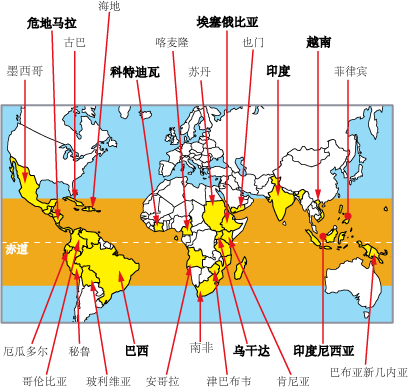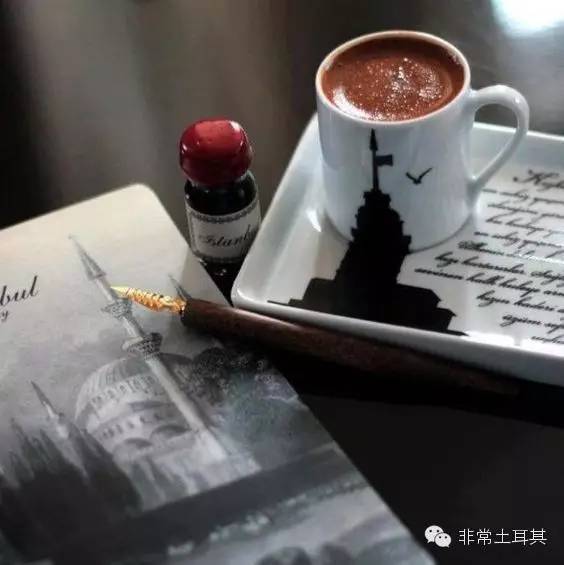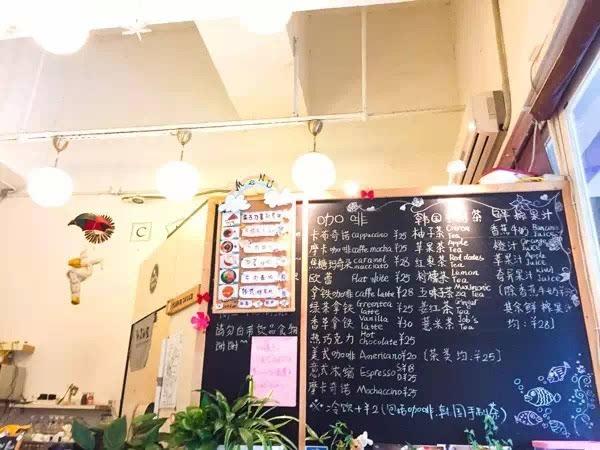An in-depth analysis of the Australian coffee shop industry: the development of the cultural boutique coffee of Australian coffee
Whether in China or Australia, coffee culture has always been one of the favorite food cultures. Editor Mocheng ingenuity will provide you with an in-depth analysis of the past life and present life of the Australian coffee industry from the history of coffee culture to the current industrial situation. The Chinese coffee market is in the ascendant. I hope this article will attract jade and make a small contribution to the coffee cooperation and exchange between China and Australia.
Just share this article with you who know coffee.
When it comes to Australian culture, we have to mention coffee culture, and Melbourne is one of the few cities that admire coffee culture very much. Coffee is the second largest trading commodity in the world, with an average annual consumption of 23,000 tons of coffee in Australia. According to RoyMorgan, the average Australian drinks about nine cups of coffee a week, and Melbourne leads the trend of Australian coffee, with the highest frequency of coffee purchases per capita in Australia.
A 2014 survey of more than 1000 travel enthusiasts by the popular travel website booking.com found that Melbourne beat Rome, Vienna and Sydney to become the city in the world that offers the best coffee. The winner of the latest World Barista Championships is also Australian. Even though the coffee maker was invented in Italy, it is still necessary to drink good coffee. So, what is capriciousness in 2015? In the beautiful scenery of the most livable city in the world, taste the best coffee in the world. I'm drunk when I think about it!
It takes courage and wisdom to open a coffee shop in Australia, which is like running to the West Lake to open tea house. You can't play without two brushes. Guests are very picky about the environment, furnishings, origin, taste and baking of the beans in the coffee shop. It's really interesting to think back to the years when I opened a coffee shop in Melbourne. The happiest thing about running your own coffee shop was listed in MelbourneCoffeeReviewtop100. All right, back to the point, let's learn about the past life and this life of the Australian coffee shop industry.
Previous life
Once upon a time, coffee drinkers in Melbourne were miners who lived in tents to dig gold, and the coffee beans used were also imported cooked beans. From 1880, Christianity began to develop in Melbourne, the abstinence dogma. In such an environment, coffee shops that do not provide alcohol begin to brew. At that time, there were more than 50 coffee shops throughout the Melbourne bar, the most famous being FederalCoffeePalace (555Collinsstreet, rebuilt in 1973 and now the National Bank of Australia office building) and TheGrandCoffeePalace (now HotelWindsoronSpringStreet). James Munro is the owner of TheGrandCoffeePalace and a famous advocate of abstinence dogmatism. There is also a famous coffee shop called Caf é Denat, which started in 1893, then changed hands several times and is now an Italian restaurant, GrossiFlorentino.
The idea was first introduced by MrQuist, a businessman from Denmark, who was born as a local coffee roaster. As early as 1938, he set up a roasted and retail coffee shop in 166littleCollinsStreet in downtown Melbourne. But MrQuist seemed unlucky and was finally kicked out of the company by his partner. In 1960, MrQuist learned from the bitter experience and decided to make a comeback and opened another store in FlindersLaneHubArcade. In the 1970s, it was Melbourne's most famous coffee shop, but now it has been transformed into a chocolate shop, chocolaite.
The first coffee shop to introduce a coffee maker is Pellegrini. As early as 1950, they introduced the first coffee concentrator espresso from Italy. Now the baristas in the store are all very loving grandpa figures! See the picture below. The Victoria Museum also has a collection of items related to Melbourne's cafe culture, including cutlery and pottery, posters, flyers, works of art and photos. The museum also has a 1955 Gaggia coffee machine from the DonCamillo restaurant. LygonStreet Street in Carlton is the Italian center of Melbourne and the birthplace of the city's second wave of coffee culture. However, with the arrival of the third coffee wave, Melbourne coffee culture is more and more inclined to boutique coffee specialtycoffee. The heyday of LygonStreet, represented by espresso, is long gone. Boutique coffee shops in Melbourne are now concentrated in areas that promote hippie culture, including near SouthMelbourne,Brunswick,Fitzroy,Richmond,CBD.
This life
The development of boutique coffee-boutique coffee is grown in an ideal geographical environment, with excellent taste characteristics of high-quality coffee beans. The special soil and climatic conditions in which beans are grown, as well as the methods of treatment according to the characteristics of each bean, are strictly required. According to the standards of the American Fine Coffee Association, a cup score of more than 80points is considered fine coffee.
Many coffee roasters in Melbourne like to go beyond the coffee bean bulk goods broker and go directly to the origin to buy boutique coffee. Direct face-to-face communication with the plantation can better understand the planting environment, and many creative inspirations are generated in the conversation between the place of origin and the plantation.
The best way to make high-quality coffee beans is hand-brewed coffee, and drinkers can taste the unique flavor of the coffee beans. Boutique coffee beans themselves taste delicate, a cup of coffee can taste different flavors.
Australians are very particular about coffee and are very resistant to American coffee. Starbucks hit a brick wall in Australia. Starbucks, as the world's largest coffee chain, has more than 15000 stores around the world. In 2000, Starbucks entered the Australian market and opened 81 stores across the country. In the first three years, Starbucks's income in Australia increased by 18.0%. In 2008, however, the company closed 61 underperforming stores in Sydney, Melbourne and Brisbane. At present, only 24 coffee shops are still operating, accounting for only 1% of the Australian coffee shop market. In May 2014, the holding group of 7-Eleven convenience stores acquired Starbucks of Australia. Since then, Starbucks Coffee in Australia has continued to survive on Australian soil through the 7-Eleven convenience store network. It is estimated that the strange thing that forced Starbucks into convenience stores will only happen in Australia, so it is a great thing to be able to operate a successful coffee shop in Australia. Every time I come back to Shanghai and see the spectacular scene of Starbucks full of people, I have the impulse to return home to open a coffee shop.

Important Notice :
前街咖啡 FrontStreet Coffee has moved to new addredd:
FrontStreet Coffee Address: 315,Donghua East Road,GuangZhou
Tel:020 38364473
- Prev

Turkish Coffee Loved by Australia People Australia's Native Coffee Culture "Force" Starbucks
People who regard food as their top priority like to label a city or a country with a dish or a kind of food. Well, for Australia Melbourne, which is a mix of ethnic immigrants, the world hears more about Australian grape wine, while coffee is closer to local life. Melbourne is the coffee capital of Australia, along with Paris, Vienna, Seattle, Havana, Vancouver and San Paolo.
- Next

Chinese Taiwan Cafe recommends Chinese Taiwan Coffee Culture is there any good coffee shop recommendation in Taiwan
In the 18th century in Taiwan, China, in 1884 (the 10th year of Guang Xu), the British introduced coffee to the three Gorges in Taipei. during the Japanese occupation, the Japanese saw that Taiwan's climate and soil were suitable for coffee, so they introduced "Arabica" from abroad and successfully planted it in the north. Mizuho invested a lot in planting and had a good yield. In the 19th century, 1941, rich output, good quality and flavor led to the complete victory of coffee in Taiwan.
Related
- How did the Salvadoran coffee industry develop in Central America?
- What exactly does the golden cup extraction of coffee mean?
- The Origin of Coffee flower
- [2023 Starbucks World Earth Day] there are more meaningful things besides free Starbucks coffee!
- What kind of coffee is there in Spain? 9 Flavors of Spanish Coffee
- Aromatic African coffee| Kenya's coffee culture and historical production area
- Liberica Coffee Bean knowledge: the characteristics of Liberian Coffee beans of the three original species of Coffee beans
- The origin and formula of Spanish latte introduces the taste characteristics of Bombon coffee in Valencia, Spain.
- How to adjust the solution of over-extracted coffee
- What is the tasting period of coffee beans? What is the period of coffee and beans? How should coffee wake up and raise beans?

